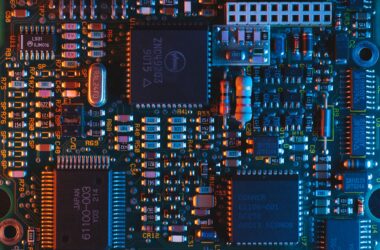Title: Ada: The Choice for Mission-critical Systems

Introduction:
In the realm of mission-critical systems, reliability, security and performance are paramount. These systems, often used in life-threatening or safety-critical applications, demand the utmost certainty of their behavior. Ada, a high-level programming language, has emerged as the de-facto choice for such systems, owing to its unique set of features that align seamlessly with the stringent requirements of mission-critical domains.
1. Unwavering Reliability:
Safety-critical systems must function flawlessly, even under extreme conditions or unforeseen circumstances. Ada’s stringent design and emphasis on runtime checks, coupled with strong typing, help minimize or eliminate runtime errors. This inherent capability of Ada to enhance software reliability makes it the ideal language for life-critical systems, enabling their seamless operation even amid inclement weather or unforeseen conditions.
2. Safety-oriented and Secure by Design:
Security breaches and data integrity failures can be detrimental in mission-critical systems, making the secure design a fundamental requirement. Ada bolsters prevention techniques against dangerous conditions. Furthermore, its strict compilation checks, robust exception handling, and runtime bounds-checking mechanisms work persistently to avoid memory-related exploits, overrun errors, and security-based attacks.
3. Advanced Concurrency Controls:
Concurrency constitutes an essential element of contemporary systems, allowing multiple tasks to execute simultaneously, thereby optimizing performance. Ada excels in this domain due to its comprehensive support for multi-tasking. Its tasking capabilities afford fine-grained scheduling and synchronization control, alongside swift context switching, ensuring efficient utilization of hardware resources and timely performance of mission-critical calculations.
4. High-level Design Features:
Foremost among Ada’s strengths are its high-level design features that enhance the clarity and manageability of the developed systems. Features such as modularity, extensive exception handling, advanced data and information structures, and a tapestry of reusable resources, foster both readability and maintainability. Moreover, Ada’s rich library of well-analyzed components streamlines the development process, culminating in a swift and less prone to errors accomplishment of the mission-critical project.
5. Compatibility and Portability:
In the realm of software systems, the ability to function seamlessly across various platforms and architectures holds fundamental importance. Ada facilitates seamless porting of applications between diverse hardware and operating environments, obviating the need for fastidiously writing different versions for different platforms. Its high level of source code portability ensures consistent performance and interface across platforms, resulting in mitigated costs and expedited development lifecycles.
Conclusion: A Compelling Choice for Critical Systems:
The combination of features and advantages discussed above corroborates Ada’s widespread adoption in mission-critical systems, where performance, reliability, and security are incommensurable. Its focus on safety, coupled with concurrent capabilities, enhanced design features, portability, and extensive library support, places it a compelling choice for software systems whose integrity can compromise lives, critical assets, or sensitive information. Ada’s standing as a defacto language for mission-critical systems will likely endure for the years to come.# Ada: The Choice For Mission-critical Systems
Executive Summary

Ada is a high-level programming language specifically designed for building large, complex software systems that require high levels of reliability and safety. It is the language of choice for mission-critical systems, where failure is not an option. Ada is known for its readability, maintainability, and portability, making it ideal for long-term projects.

Introduction
In the realm of software development, few programming languages can match the power and reliability of Ada. Specifically designed for creating mission-critical systems that demand the utmost levels of integrity and dependability, Ada has established itself as the language of choice for applications where failure is simply not an option. Its remarkable track record in industries such as aerospace, defense, healthcare, and finance stands as a testament to its robustness and unwavering performance.
Subtopics
-
Reliability and Safety:
- Ada’s strong typing and extensive error-checking mechanisms minimize the chances of runtime errors.
- Ada’s design emphasizes defensiveness and predictability, making it less susceptible to exploitable vulnerabilities.
- Ada’s deterministic behavior ensures consistent and reliable execution, even under adverse conditions.
-
Readability and Maintainability:
- Ada’s clear syntax and structured design make it easy to read and understand, reducing the likelihood of errors.
- Ada’s modular architecture facilitates effective code organization and promotes easy maintenance.
- Ada’s extensive documentation and rich library ecosystem further enhance its maintainability.
-
Portability and Reusability:
- Ada’s standardized design and wide availability of compilers ensure that Ada code can be easily ported across different platforms and operating systems.
- Ada’s modularity and reusability features enable the sharing and reuse of code across projects, saving time and effort.
- Ada’s long-term support and backward compatibility make it an enduring choice for long-lived systems.
-
Performance and Scalability:
- Ada’s efficient runtime system and optimized compilers generate high-performance code that can handle demanding workloads.
- Ada’s strong typing and memory management features minimize runtime overheads, resulting in efficient execution.
- Ada’s support for concurrency and parallelism allows for the development of scalable systems that can leverage multi-core processors and distributed architectures.
-
Security and Robustness:
- Ada’s type system and strict compile-time checks prevent buffer overflows, format string attacks, and other common security vulnerabilities.
- Ada’s inherent safety features make it resistant to malicious code injection and other runtime attacks.
- Ada’s rigorous development process and extensive testing requirements ensure the production of secure and robust systems.
Conclusion
Ada’s unique combination of reliability, safety, readability, portability, and performance makes it the ideal choice for developing mission-critical systems. Its proven track record in industries with stringent requirements demonstrates its ability to deliver systems that consistently meet the highest standards of quality and dependability. For applications where failure is not an option, Ada stands as the unyielding guardian of software integrity and safety.
Keyword Phrase Tags
- Ada programming language
- Mission-critical systems
- Reliability and safety
- Readability and maintainability
- Performance and scalability


Can you give me more information about the costs of faulty programs, or provide some references for further reading?
I’m not sure I agree. Faulty programs can be expensive, but it’s important to consider the potential benefits of using a higher-level language.
So, you’re saying that the more expensive software is, the more likely it is to be faulty?
Great! Now I can sleep soundly knowing that my mission-critical systems are being protected by the most expensive software money can buy.
This is great news! I’ve been looking for a language that can help me create high-quality software. I’ll definitely check out Ada.
Another article trying to sell me on Ada. Look, I don’t what Ada is and I don’t care. Leave me alone.
I’m not sure I understand this. Can someone explain it to me in a simpler way?
This article is biased. It only presents one side of the argument. There are other languages that are just as good, if not better, than Ada.
I’m not gonna lie, this article has me rolling on the floor laughing. I can’t believe someone actually thinks Ada is the best language for mission-critical systems.
There is no one-size-fits-all solution when it comes to choosing a programming language. Ada may be a good choice for some mission-critical systems, but it may not be the best choice for others. It’s important to evaluate your specific needs and requirements before making a decision.